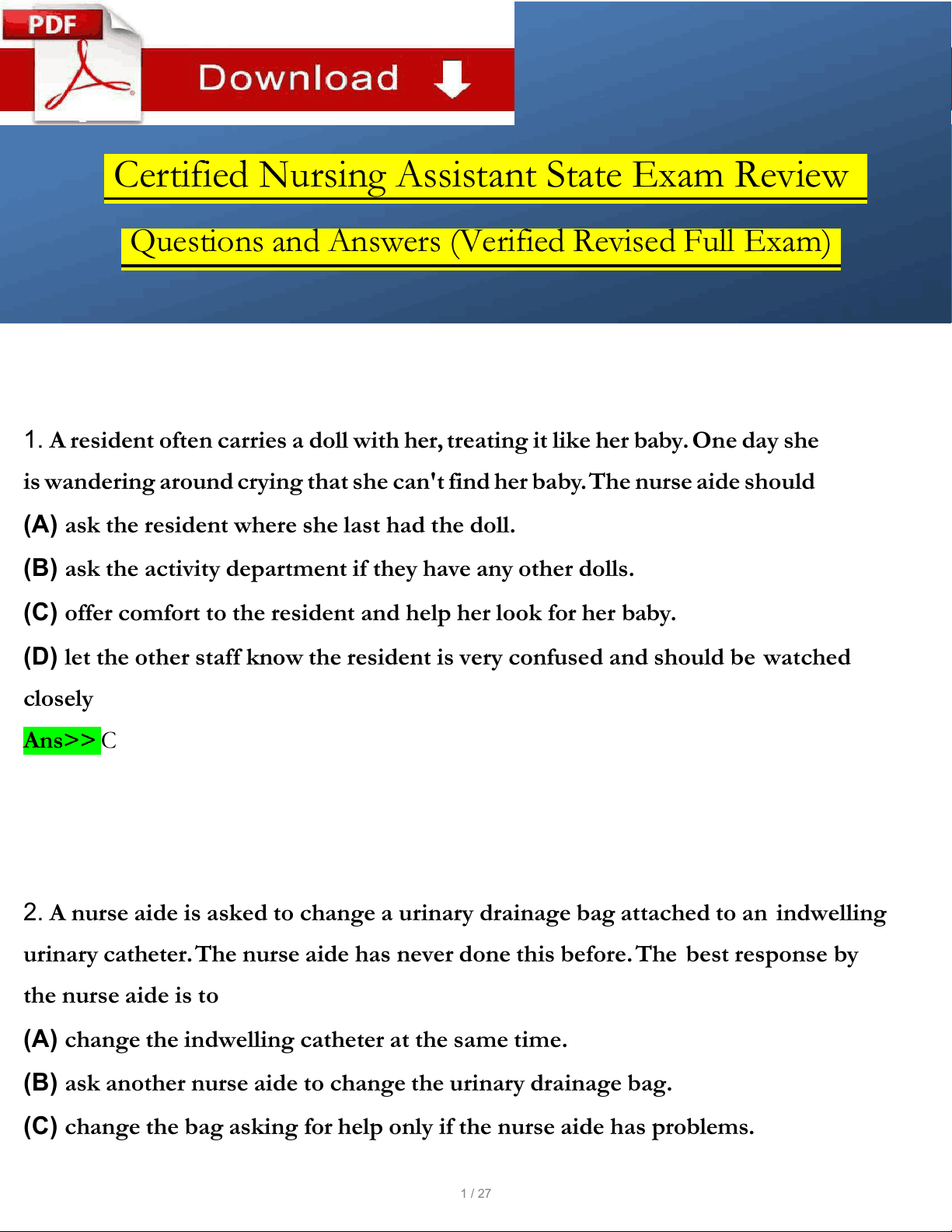

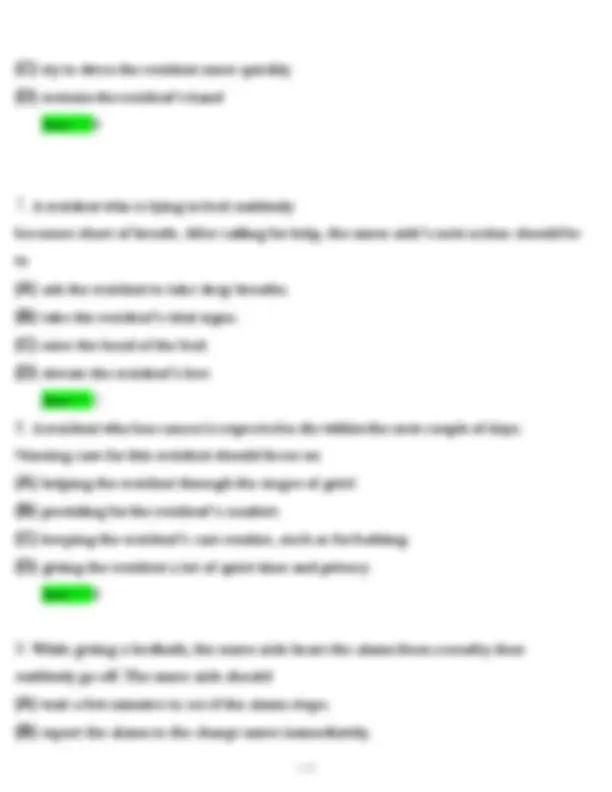
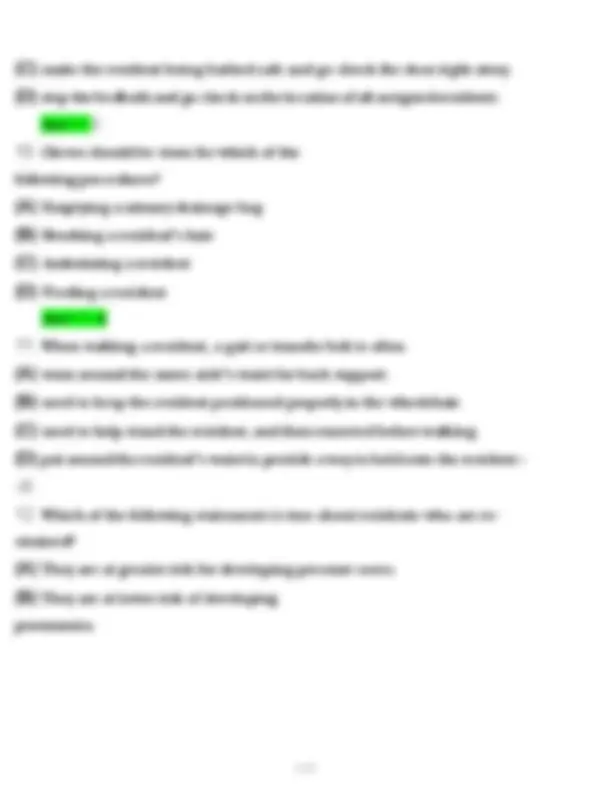
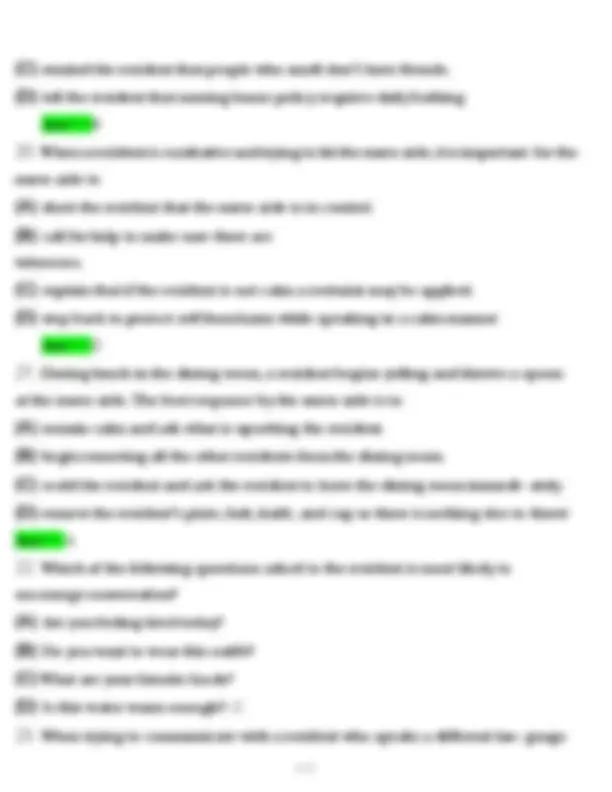
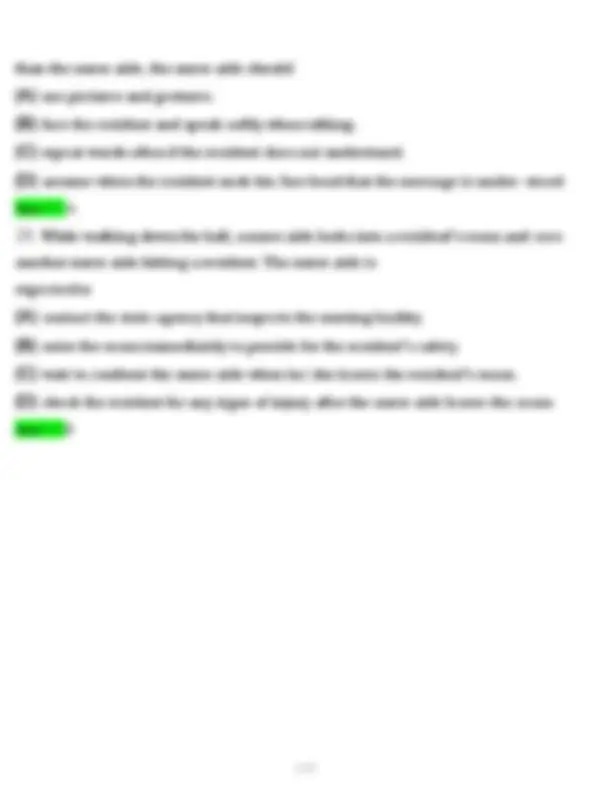
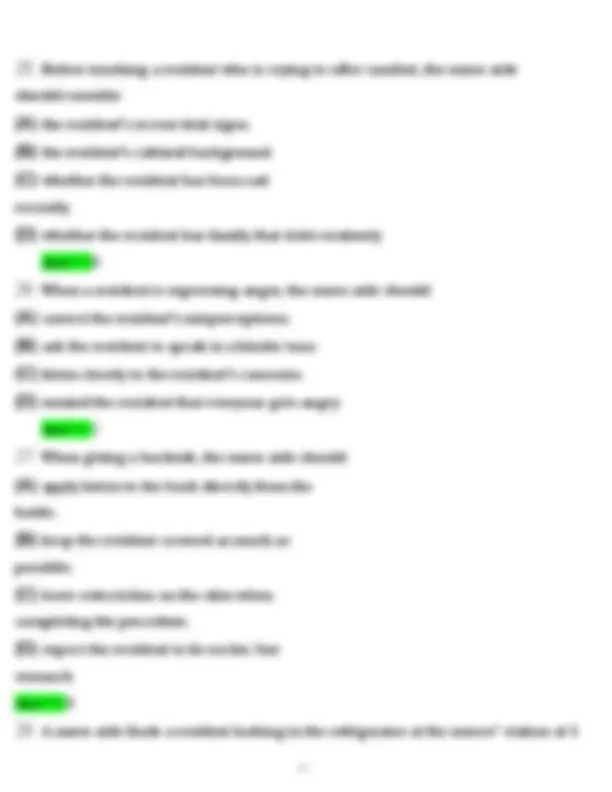
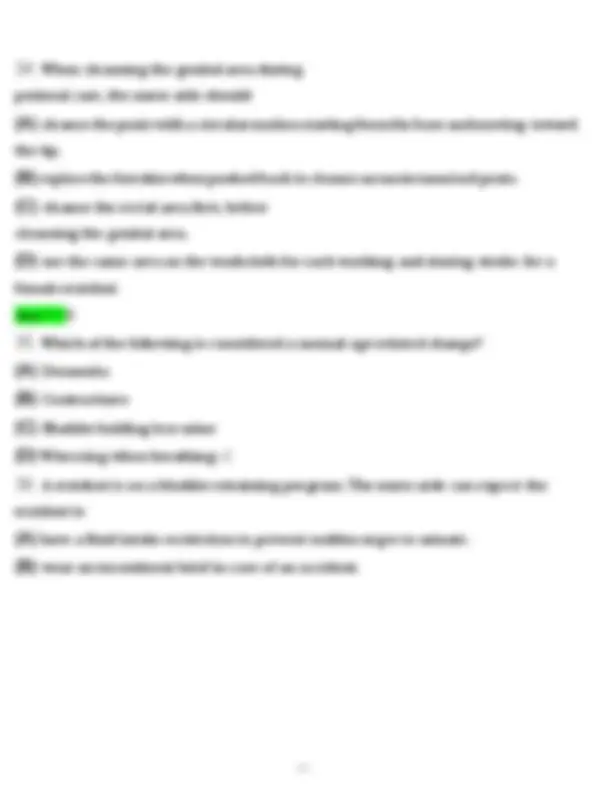
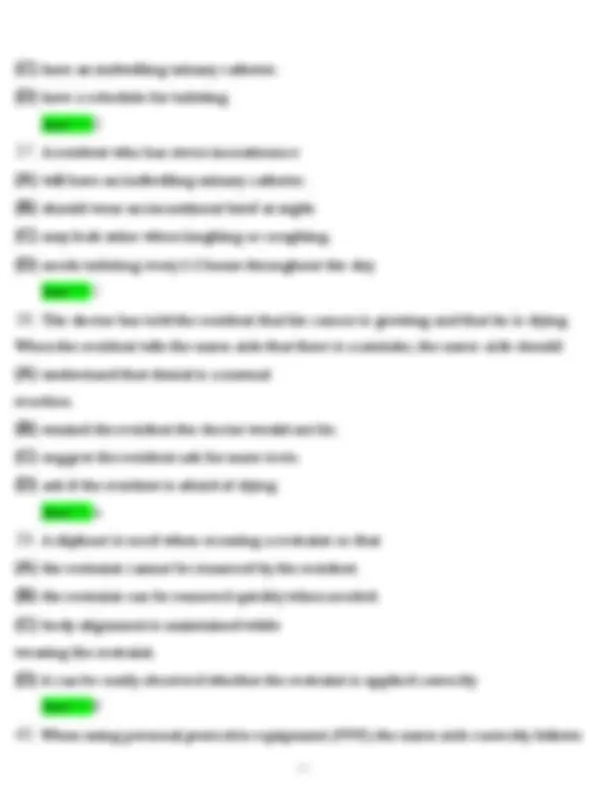
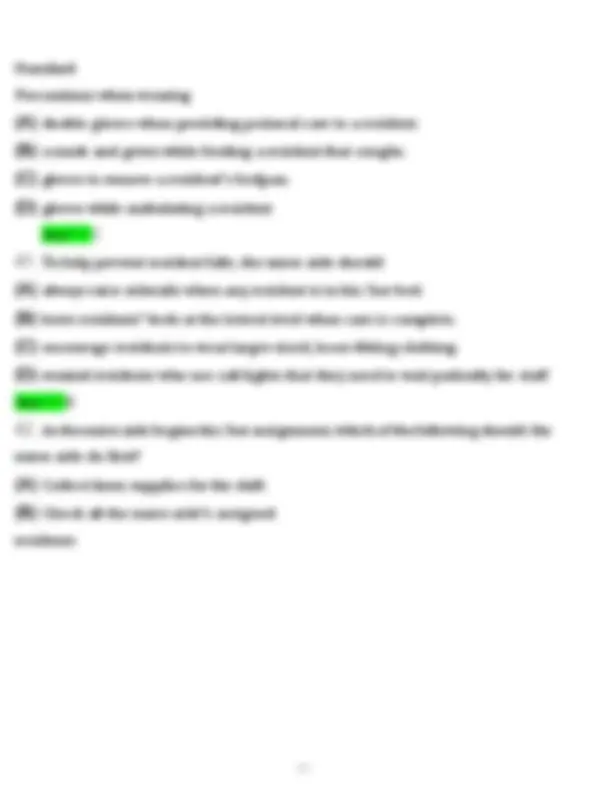
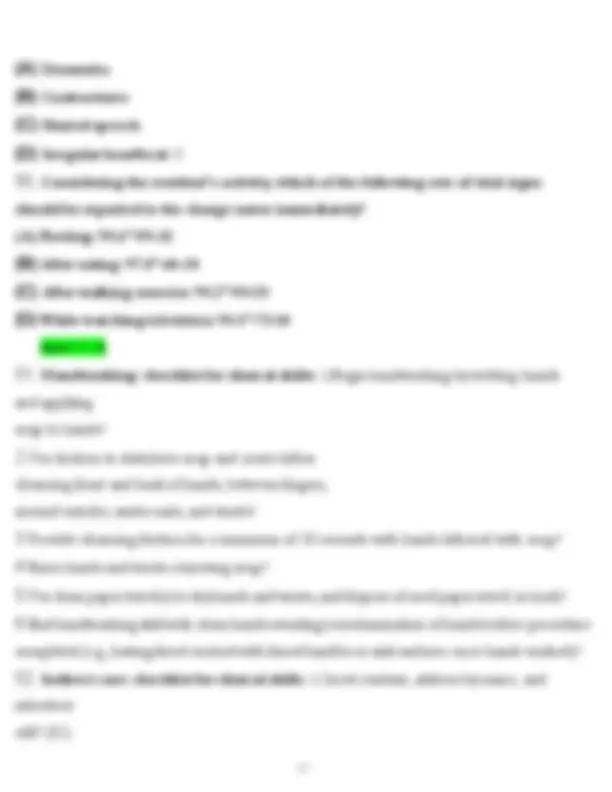
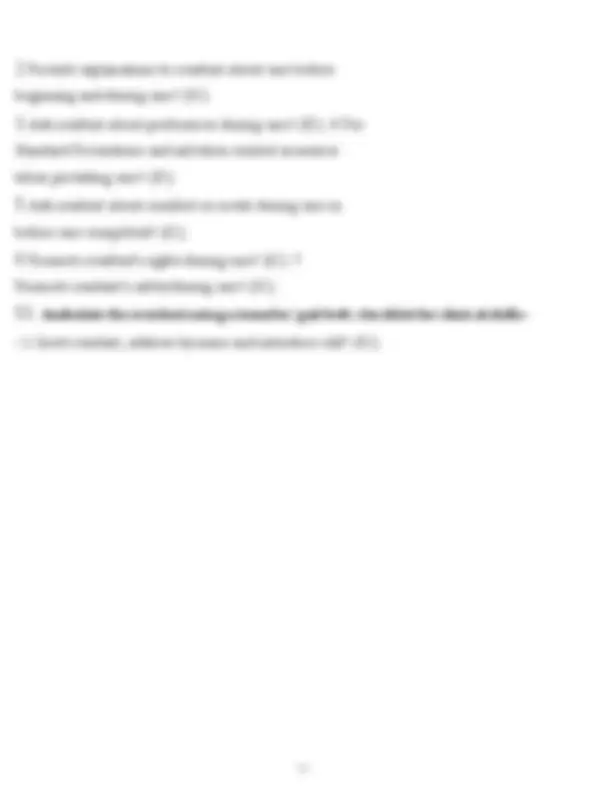
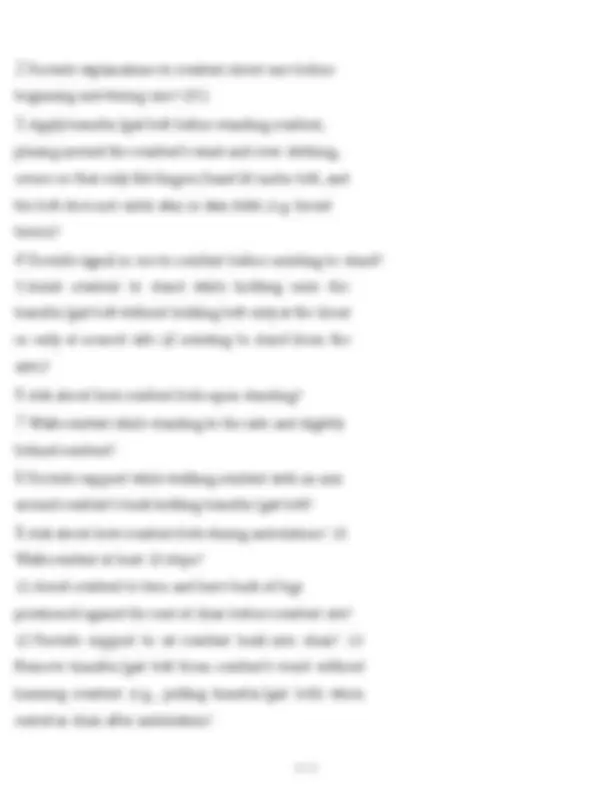
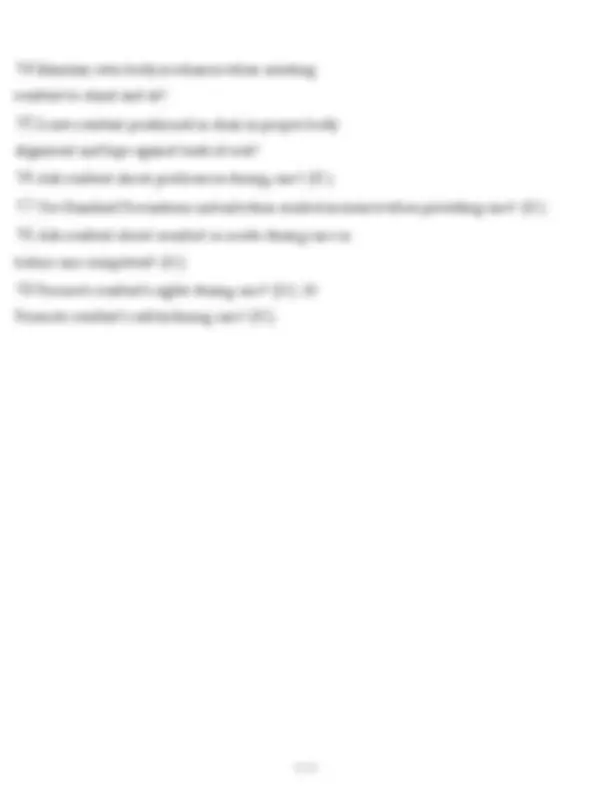
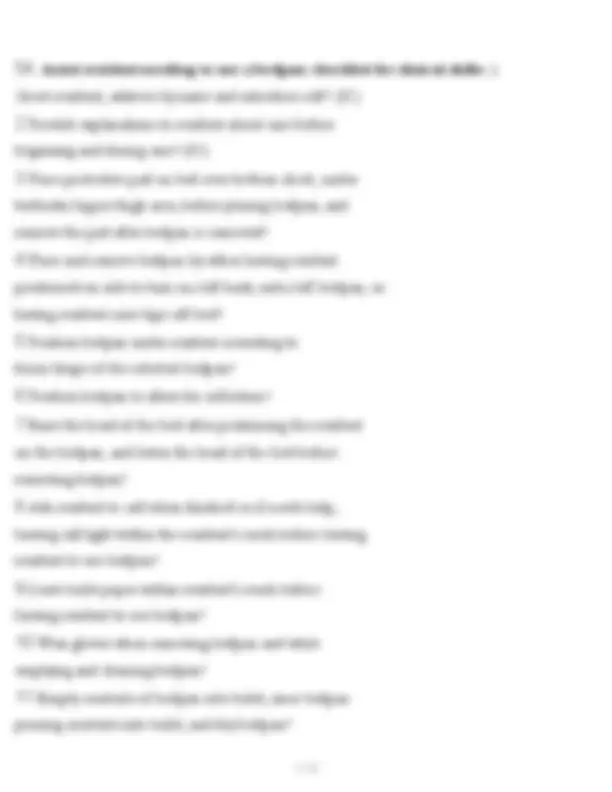
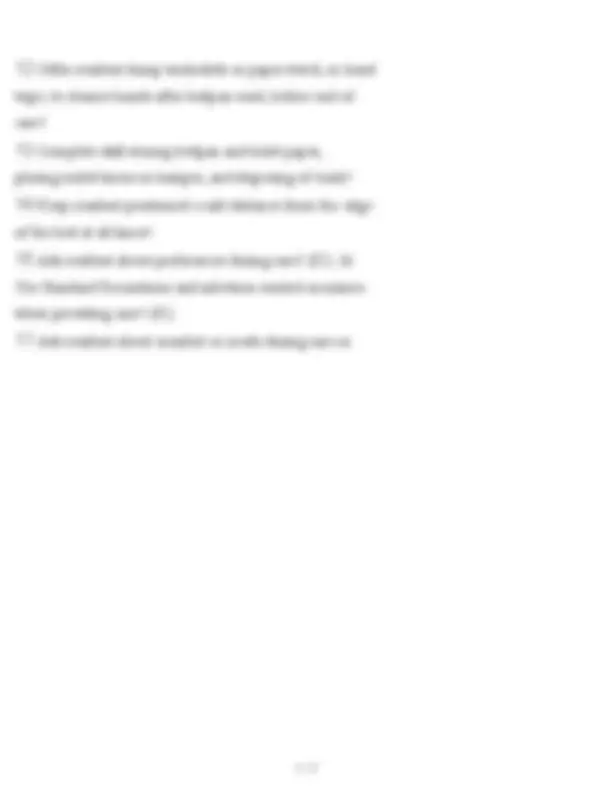
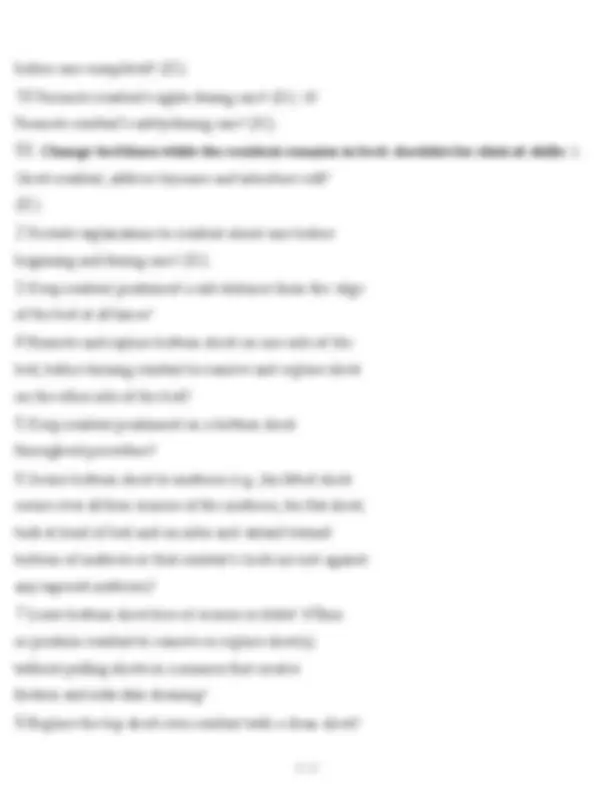
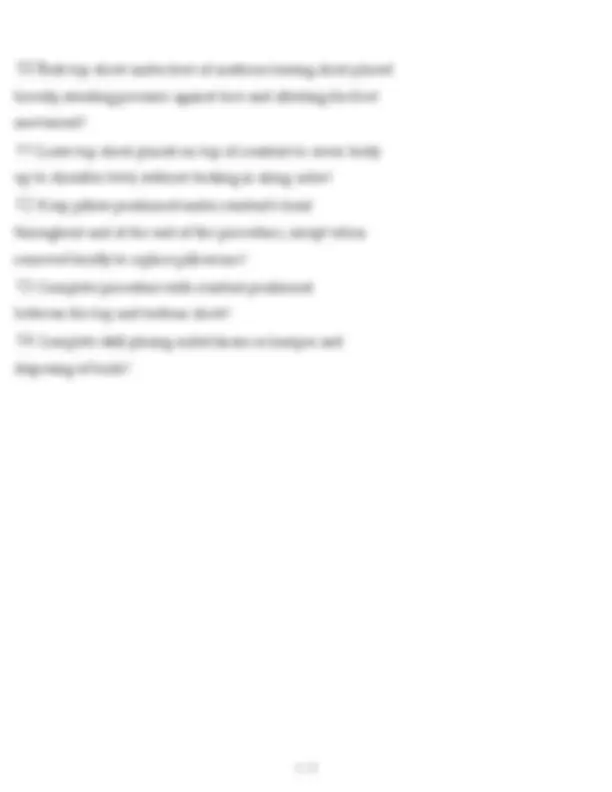
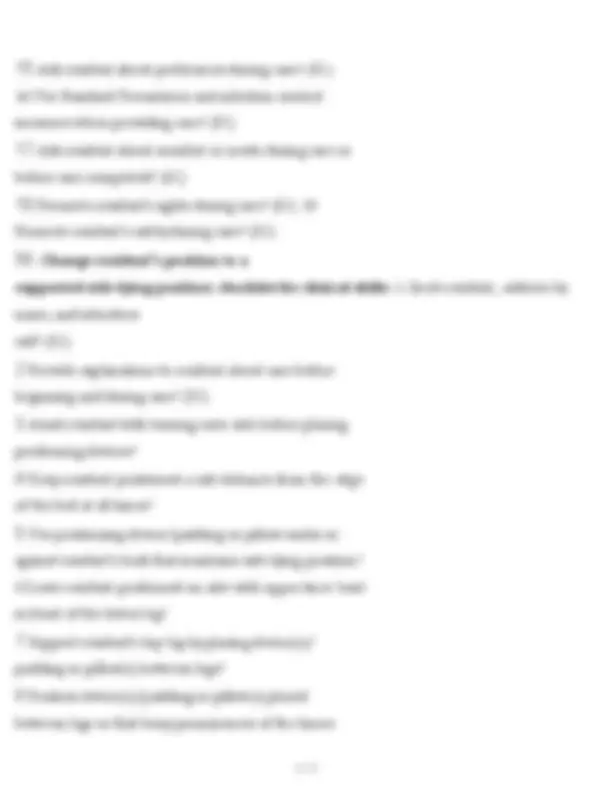
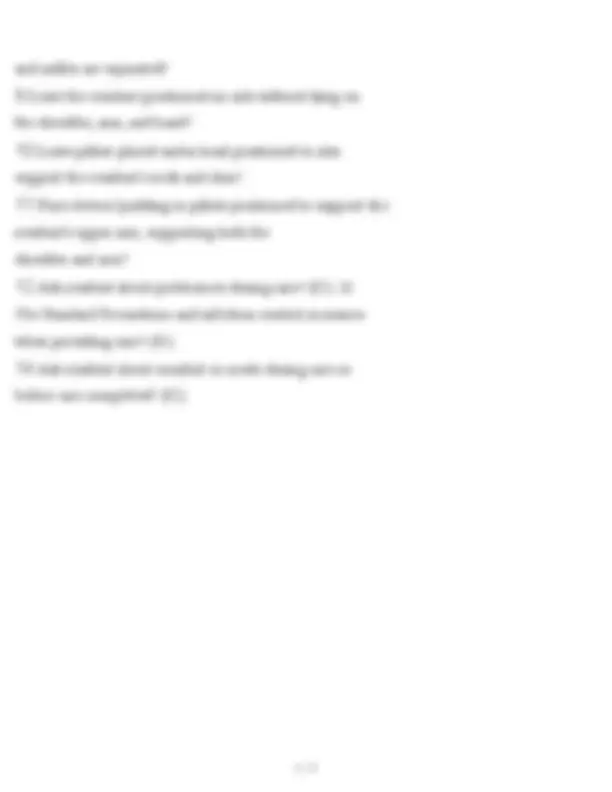
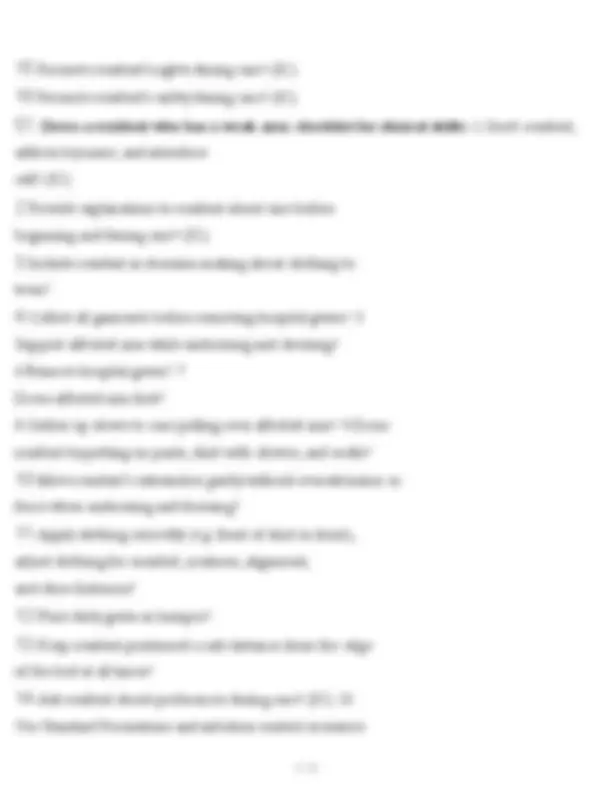
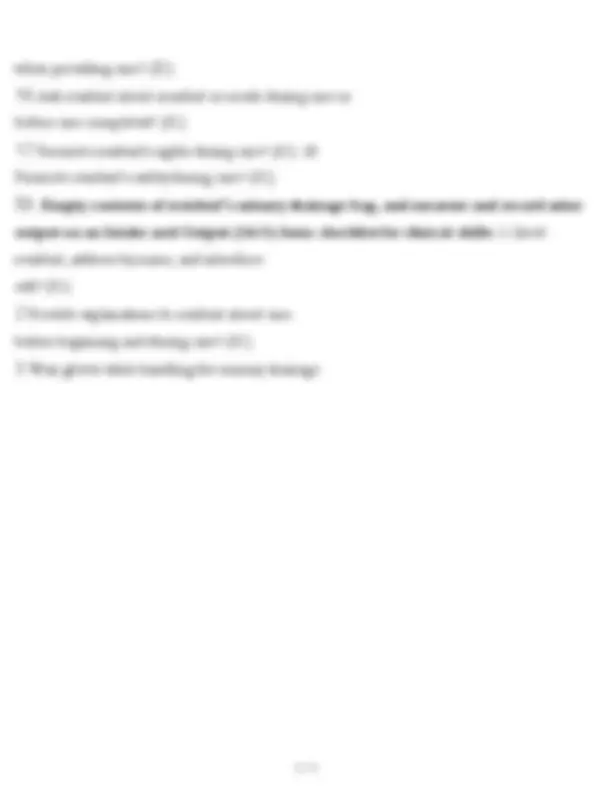

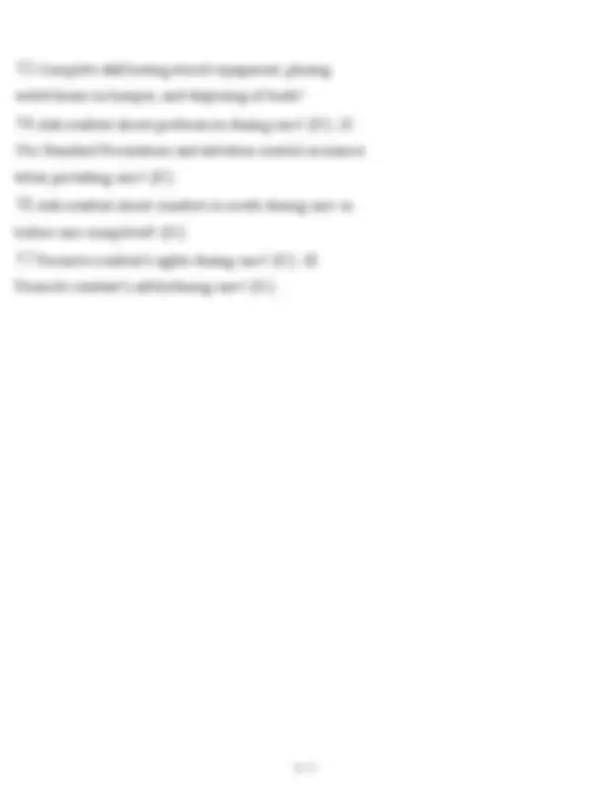
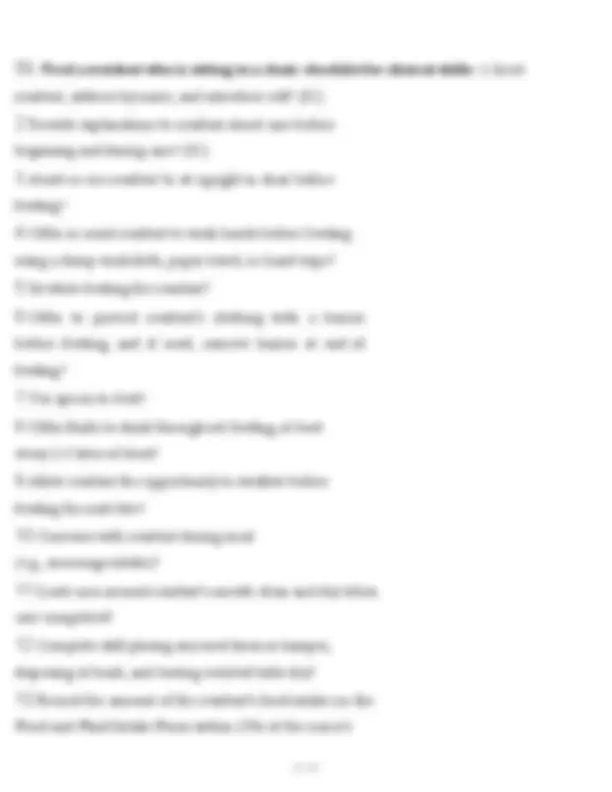
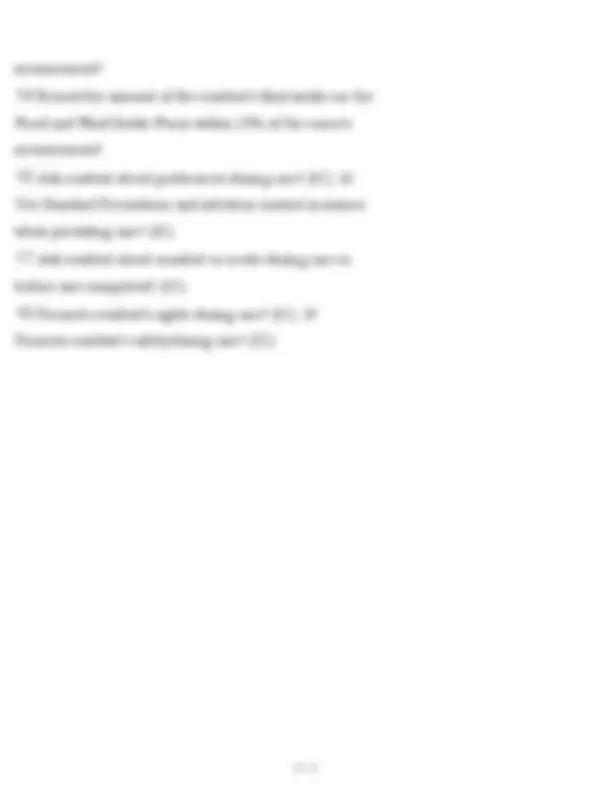
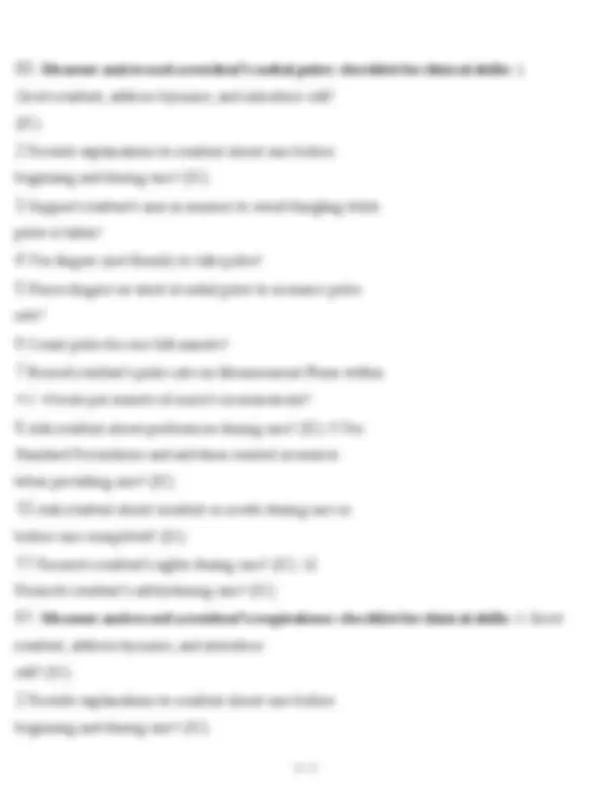
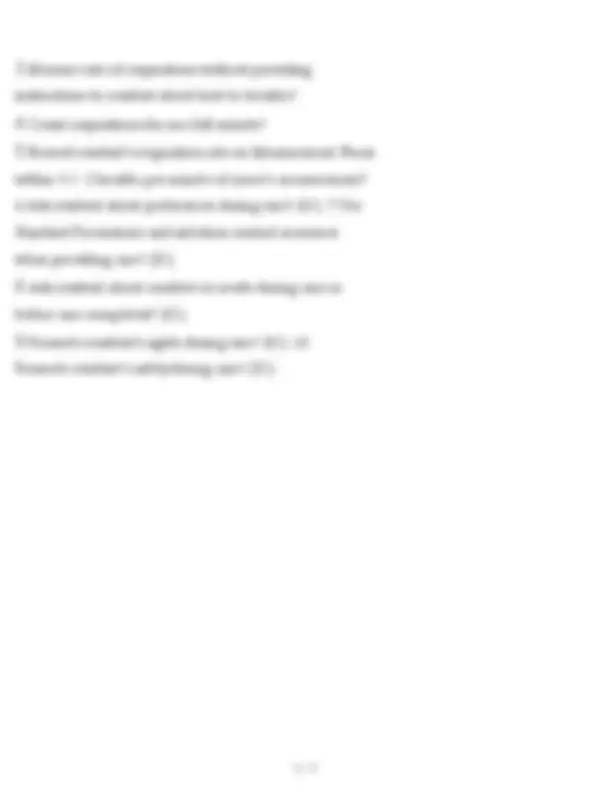
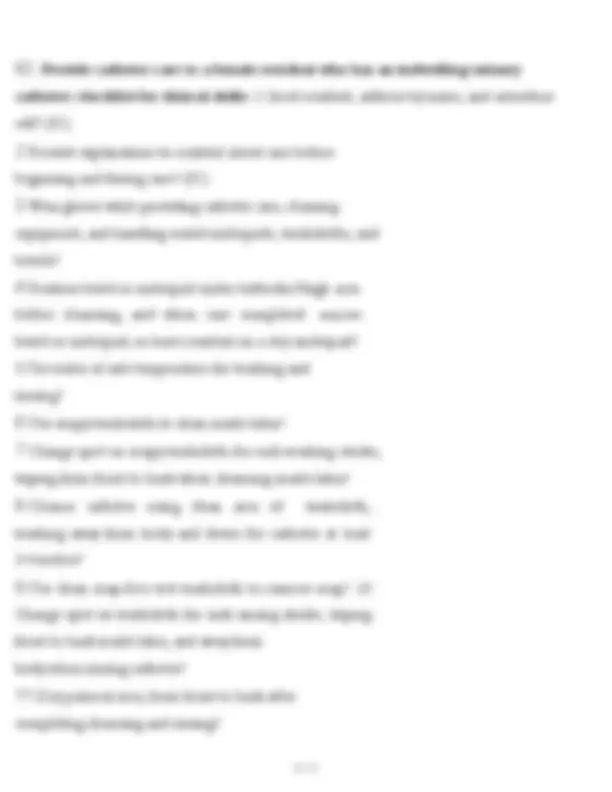
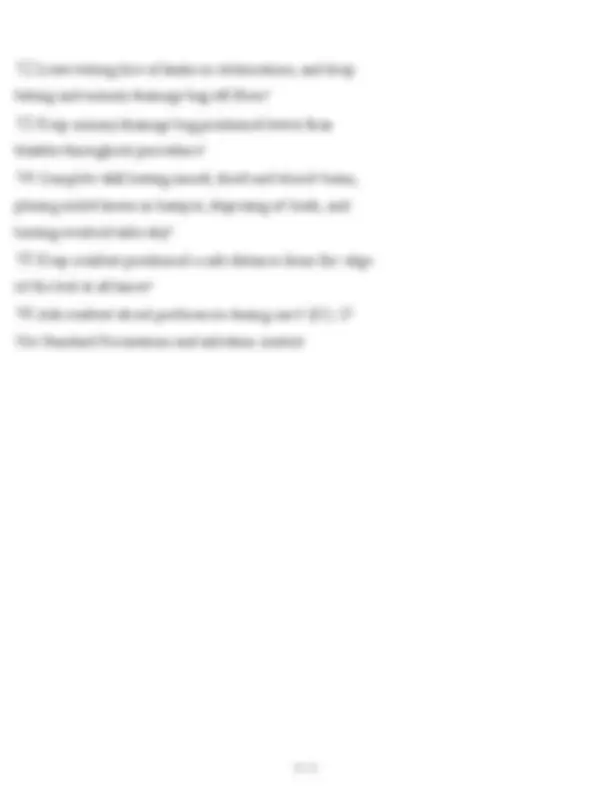
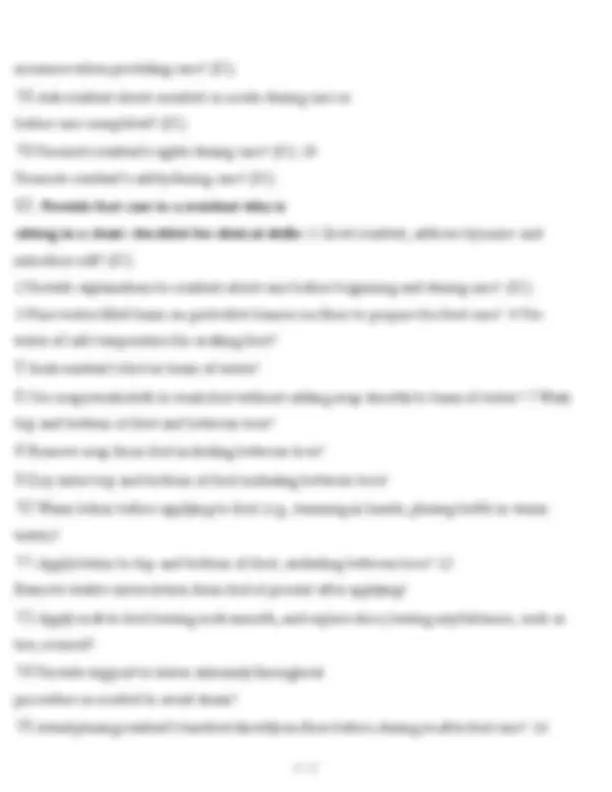
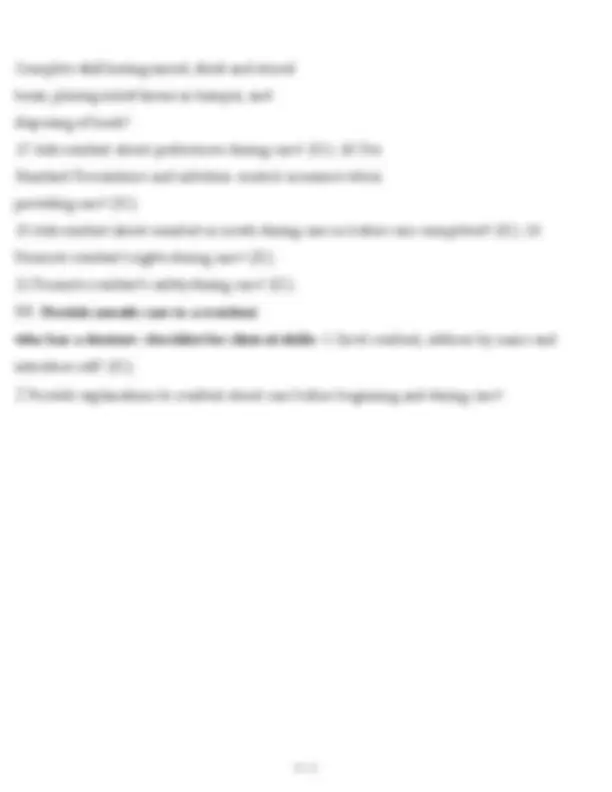
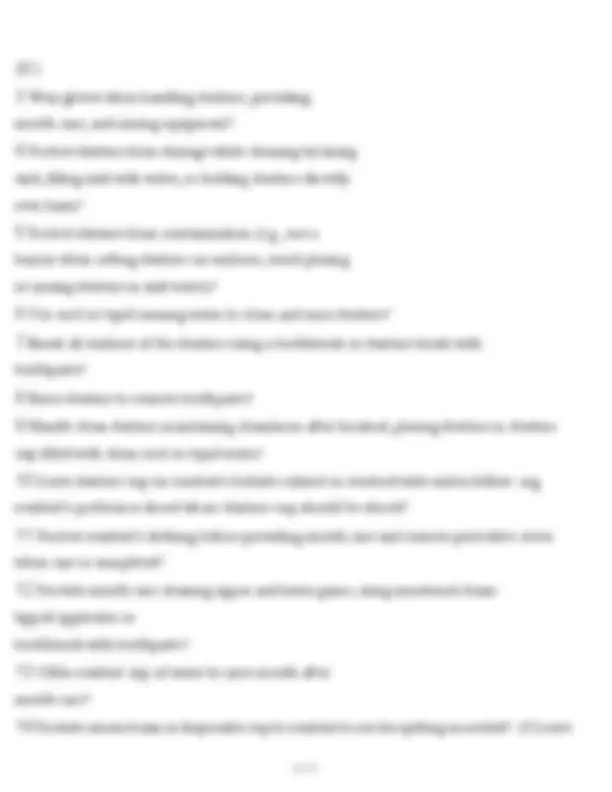
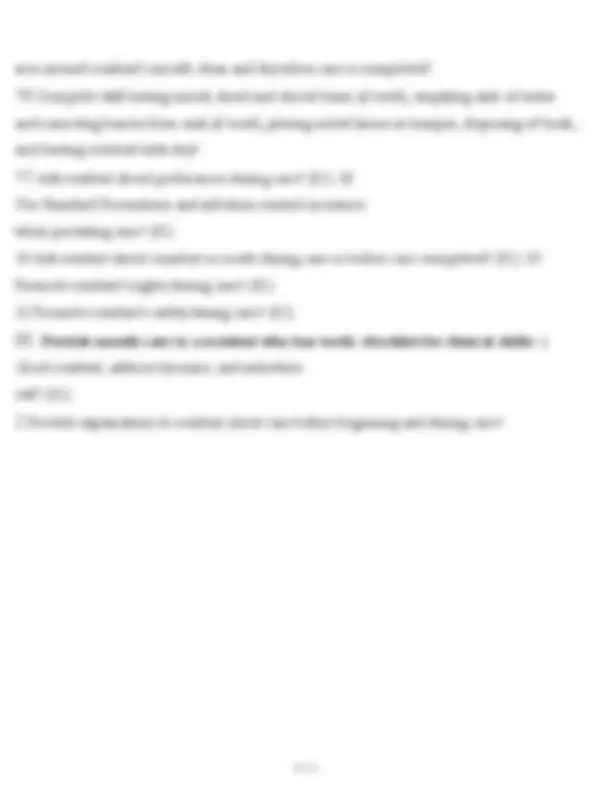
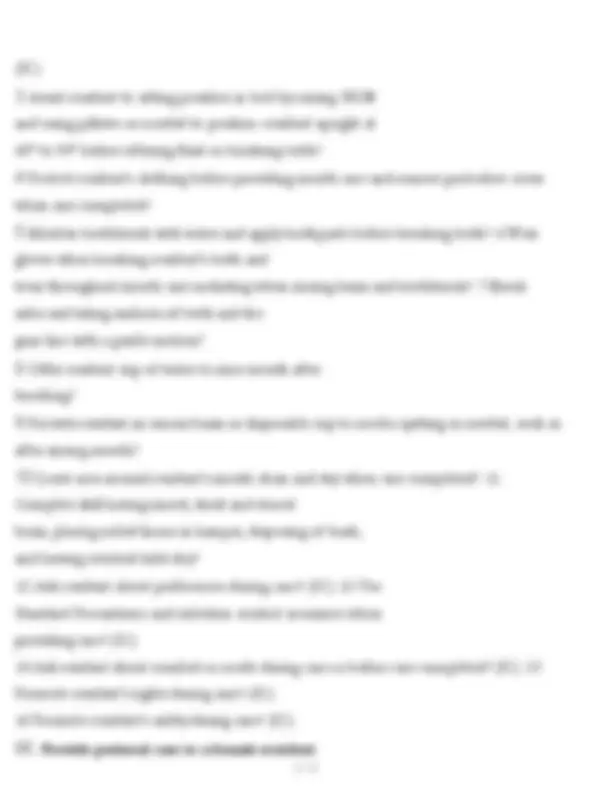
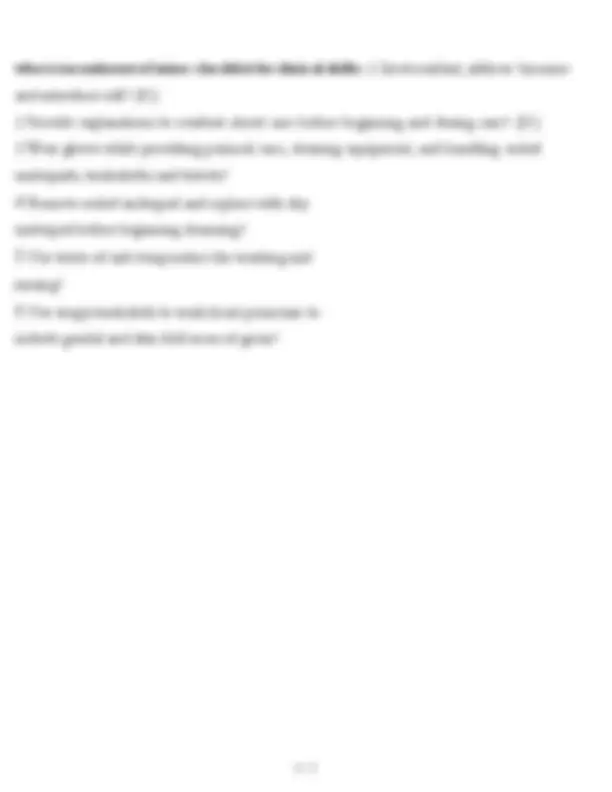
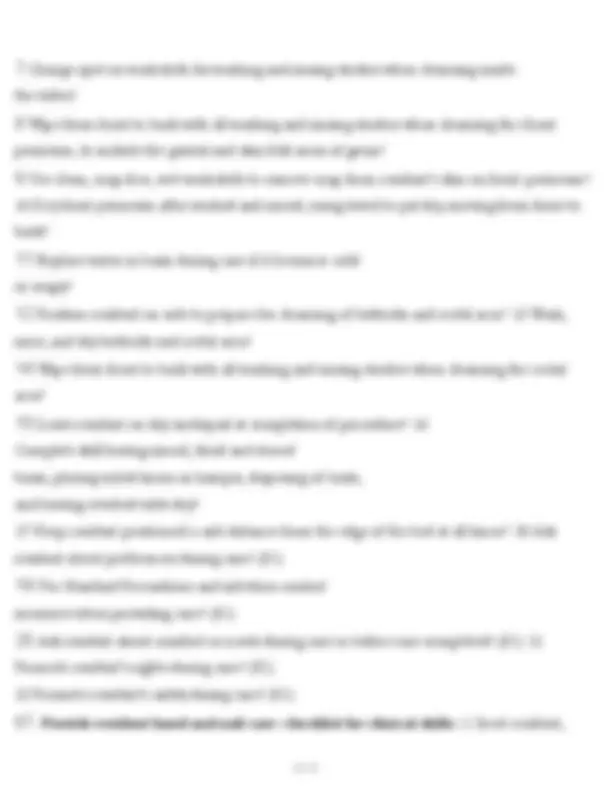
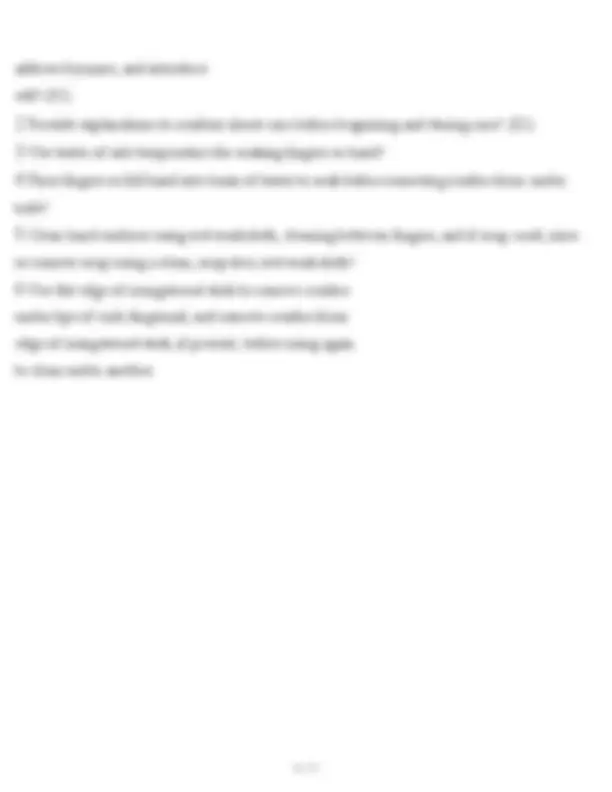
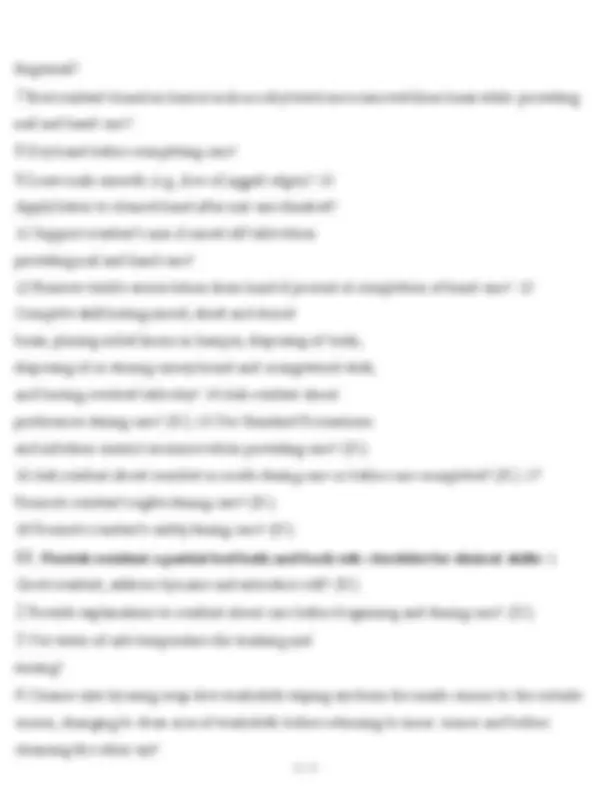
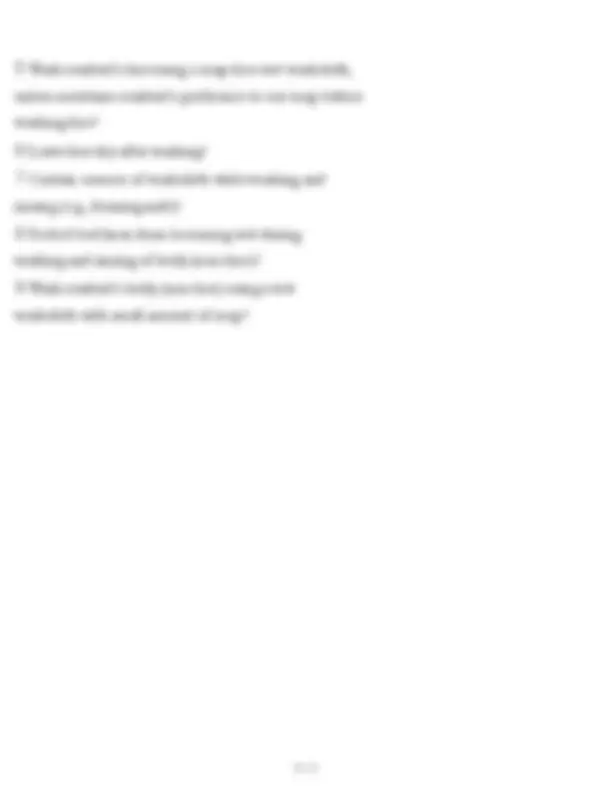
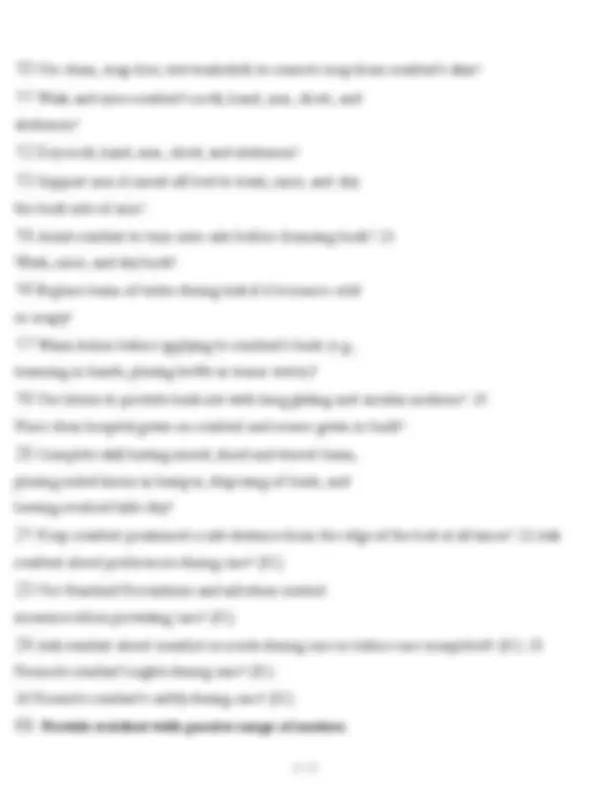
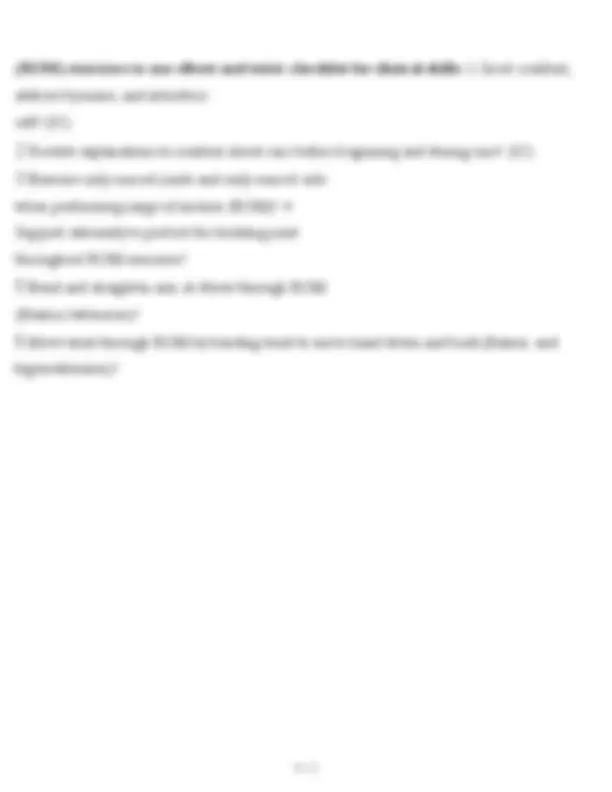
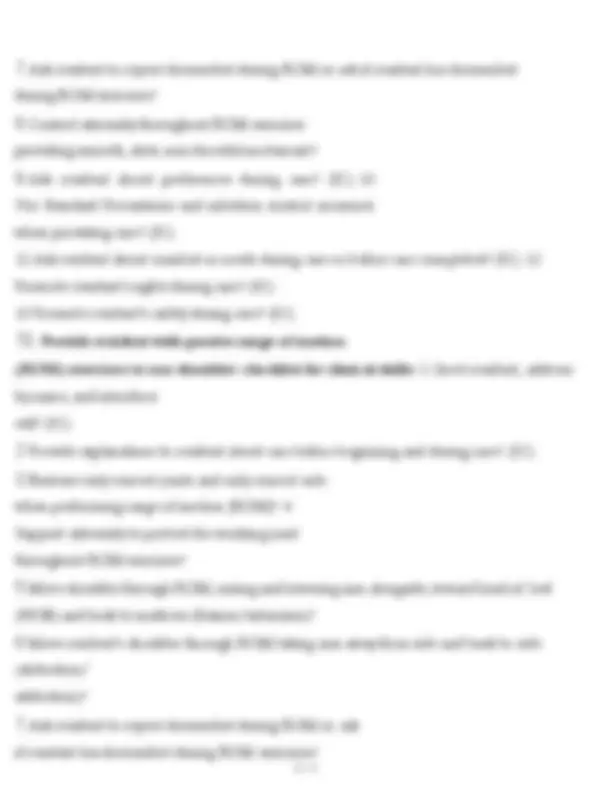
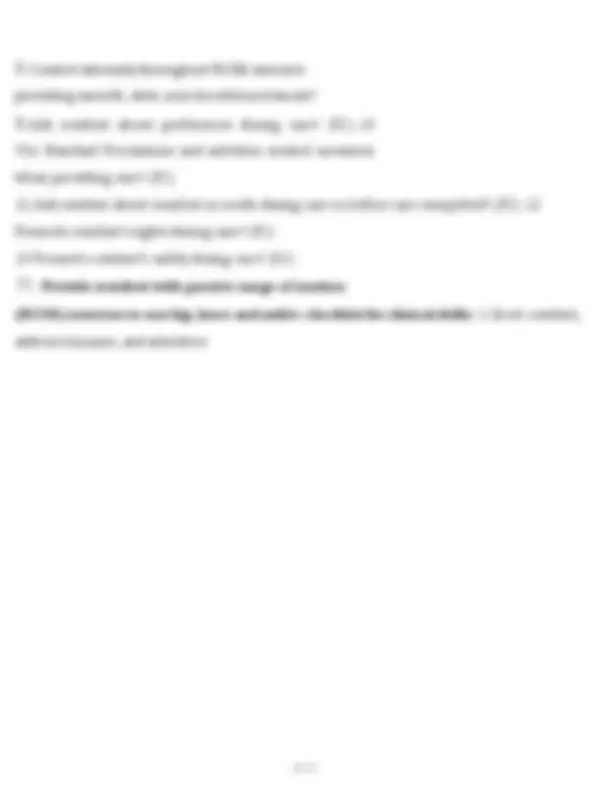
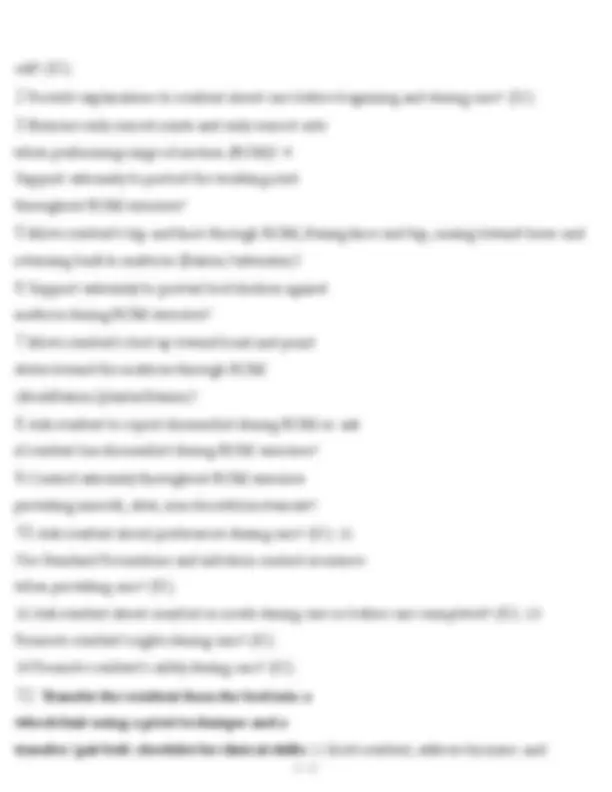
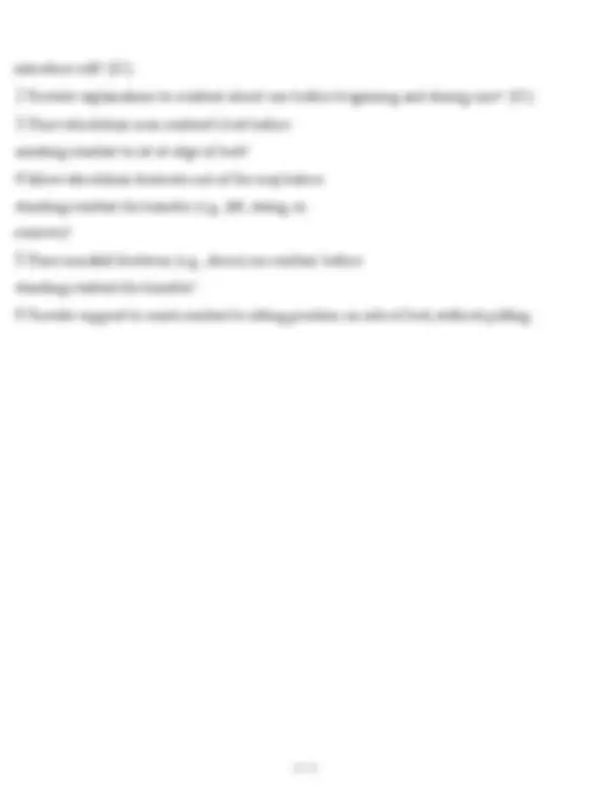
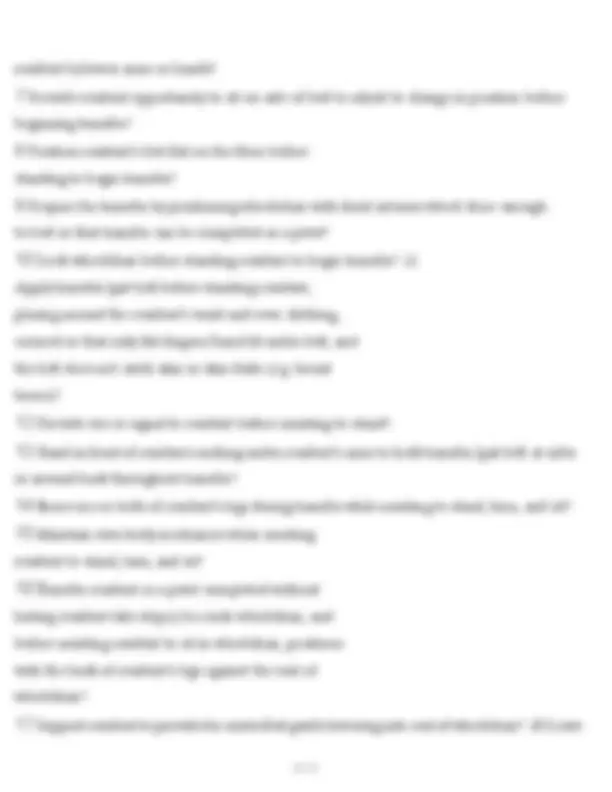
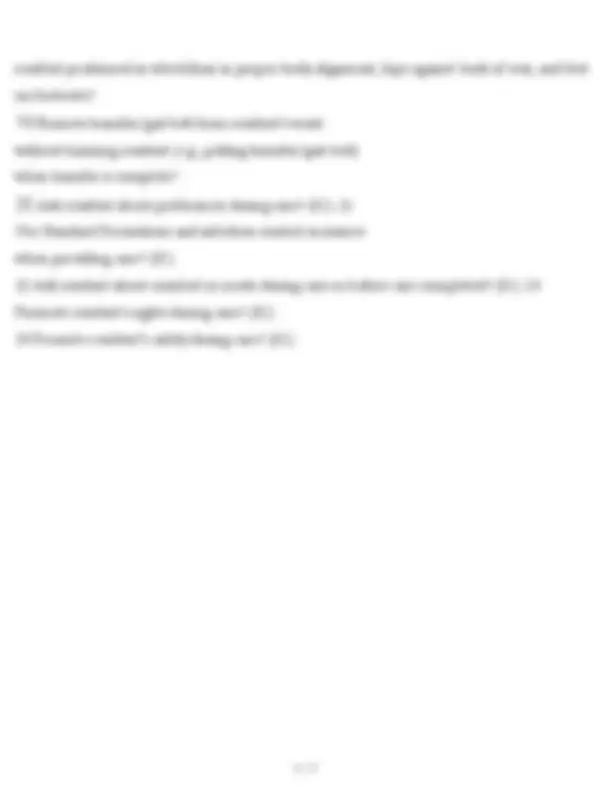


Study with the several resources on Docsity

Earn points by helping other students or get them with a premium plan


Prepare for your exams
Study with the several resources on Docsity

Earn points to download
Earn points by helping other students or get them with a premium plan
Community
Ask the community for help and clear up your study doubts
Discover the best universities in your country according to Docsity users
Free resources
Download our free guides on studying techniques, anxiety management strategies, and thesis advice from Docsity tutors
A comprehensive review of the certified nursing assistant (cna) state exam, covering a wide range of topics relevant to the profession. It includes multiple-choice questions and answers, designed to test knowledge and understanding of essential cna skills and procedures. A valuable resource for individuals preparing for the cna exam, offering a practical and informative approach to exam preparation.
Typology: Exams
1 / 55

This page cannot be seen from the preview
Don't miss anything!
















































(D) let the other staff know the resident is very confused and should be watched closely Ans>> C
(A) change the indwelling catheter at the same time. (B) ask another nurse aide to change the urinary drainage bag. (C) change the bag asking for help only if the nurse aide has problems.
(D) ask a nurse to watch the nurse aide change the bag since it is the first time Ans>> D
(A) The resident may still touch his/her mouth or food. (B) It reduces the risk of spreading airborne diseases.
(C) It improves resident morale and appetite. (D) The resident needs to keep meal routines Ans>> A
(A) Participating in resident care planning conferences (B) Taking a telephone order from a physician (C) Giving medications to assigned residents (D) Changing sterile wound dressings Ans>>: A
(C) try to dress the resident more quickly. (D) restrain the resident's hand Ans>> B
(A) ask the resident to take deep breaths. (B) take the resident's vital signs. (C) raise the head of the bed. (D) elevate the resident's feet Ans>> C
(C) make the resident being bathed safe and go check the door right away. (D) stop the bedbath and go check on the location of all assigned residents Ans>> C
(D) Feeding a resident Ans>>: A
(C) used to help stand the resident, and then removed before walking. (D) put around the resident's waist to provide a way to hold onto the resident.- : D
(B) They are at lower risk of developing pneumonia.
(B) require a lot of assistance with personal care. (C) experience a sense of loss related to the life change. (D) adjust more quickly if admitted directly from the hospital Ans>> C
(C) remind the resident that the nurse aide can dress the resident. (D) ask if the resident lost some of his shoes Ans>> B
(B) tell the resident that he needs to get out of his room at least once a day. (C) understand the resident is grieving and give him chances to talk. (D) avoid mentioning his wife when caring for him Ans>> C
(C) remind the resident that people who smell don't have friends. (D) tell the resident that nursing home policy requires daily bathing Ans>> B
(C) scold the resident and ask the resident to leave the dining room immedi- ately. (D) remove the resident's plate, fork, knife, and cup so there is nothing else to throw Ans>> A
(B) Do you want to wear this outfit? (C) What are your favorite foods? (D) Is this water warm enough?: C
(A) the resident's recent vital signs. (B) the resident's cultural background. (C) whether the resident has been sad recently. (D) whether the resident has family that visits routinely Ans>> B
(A) apply lotion to the back directly from the bottle. (B) keep the resident covered as much as possible. (C) leave extra lotion on the skin when completing the procedure. (D) expect the resident to lie on his/her stomach Ans>> B
a.m. The resident, who is confused, explains he needs breakfast before he leaves for work. The best response by the nurse aide is to (A) help the resident back to his room and into bed. (B) ask the resident about his job and if he is hungry. (C) tell him that residents are not allowed in the nurses' station.
(D) remind him that he is retired from his job and in a nursing home Ans>> B
(C) Clean the earmold and battery case with water daily, drying completely. (D) Replace batteries weekly Ans>> B
(A) become confused and forget how to take steps without help. (B) have poor attention skills and do not notice safety problems.
(A) cleanse the penis with a circular motion starting from the base and moving toward the tip. (B) replace the foreskin when pushed back to cleanse an uncircumcised penis.
(C) cleanse the rectal area first, before cleansing the genital area. (D) use the same area on the washcloth for each washing and rinsing stroke for a female resident Ans>> B
(C) Bladder holding less urine (D) Wheezing when breathing: C
(C) have an indwelling urinary catheter. (D) have a schedule for toileting Ans>> D
(D) needs toileting every 1-2 hours throughout the day Ans>> C
(C) body alignment is maintained while wearing the restraint.
(D) it can be easily observed whether the restraint is applied correctly Ans>> B
(C) Assist a resident that has called for assistance to get off the toilet
(D) Start bathing a resident that has physical therapy in one hour: C
(D) Having a finding for resident neglect: D
(D) warn residents that holding hands spreads germs Ans>> B
(C) an elbow, if possible, to turn the faucet controls on and off. (D) bare hands to turn the faucet controls both on and off Ans>> B
(A) position self with knees straight and bent at waist. (B) use a gait or transfer belt to assist with the repositioning.
(C) pull the resident up holding onto one side of the drawsheet at a time. (D) bend the resident's knees and ask the resident to push with his/her feet Ans>> D
(D) activity level Ans>> C
(C) To have religious services offered at the facility daily (D) To make decisions and participate in own care: D
2 Provide explanations to resident about care before beginning and during care? (IC)
3 Ask resident about preferences during care? (IC) 4 Use Standard Precautions and infection control measures when providing care? (IC) 5 Ask resident about comfort or needs during care or before care completed? (IC) 6 Promote resident's rights during care? (IC) 7 Promote resident's safety during care? (IC)
2 Provide explanations to resident about care before beginning and during care? (IC)
3 Apply transfer/gait belt before standing resident, placing around the resident's waist and over clothing, secure so that only flat fingers/hand fit under belt, and the belt does not catch skin or skin folds (e.g. breast tissue)?
4 Provide signal or cue to resident before assisting to stand? 5 Assist resident to stand while holding onto the transfer/gait belt without holding belt only at the front or only at nearest side (if assisting to stand from the side)?
6 Ask about how resident feels upon standing? 7 Walk resident while standing to the side and slightly behind resident? 8 Provide support while walking resident with an arm around resident's back holding transfer/gait belt?
9 Ask about how resident feels during ambulation? 10 Walk resident at least 10 steps? 11 Assist resident to turn and have back of legs positioned against the seat of chair before resident sits? 12 Provide support to sit resident back into chair? 13 Remove transfer/gait belt from resident's waist without harming resident (e.g., pulling transfer/gait belt) when seated in chair after ambulation?